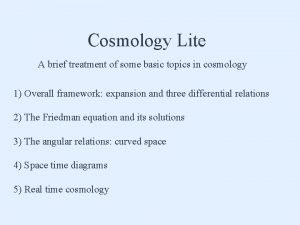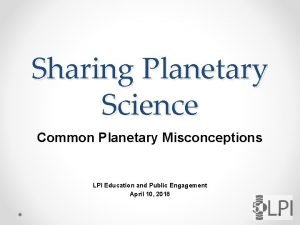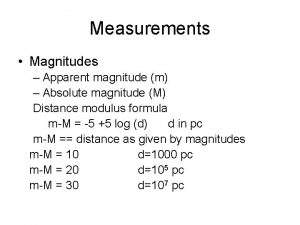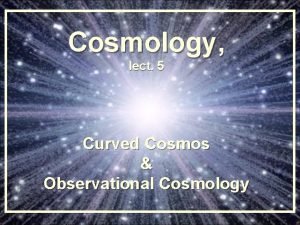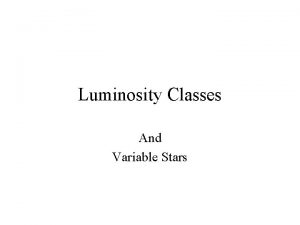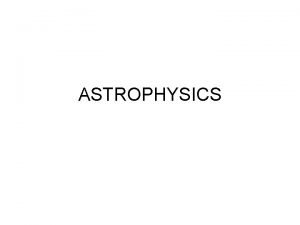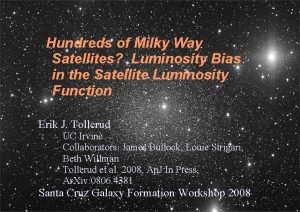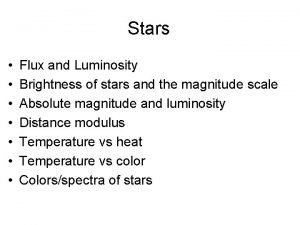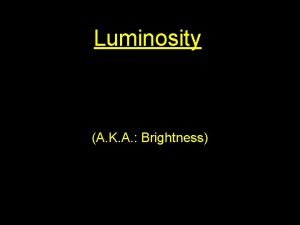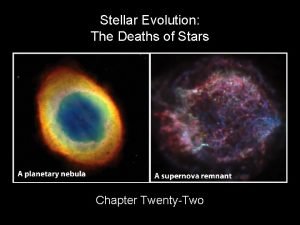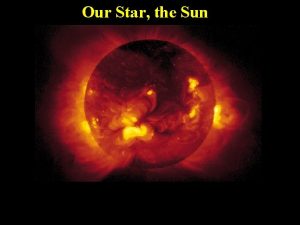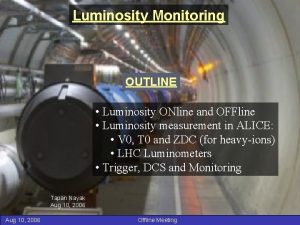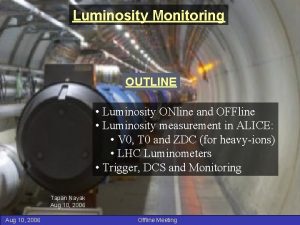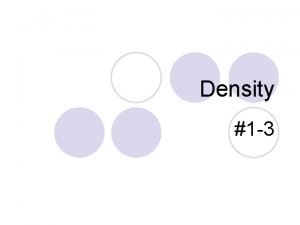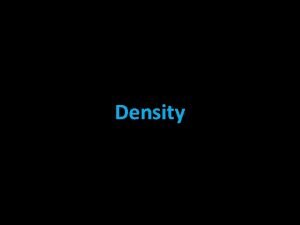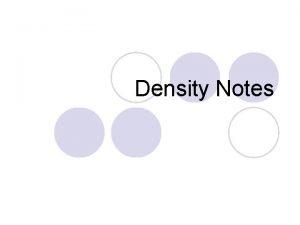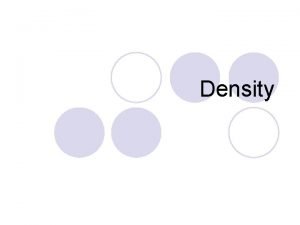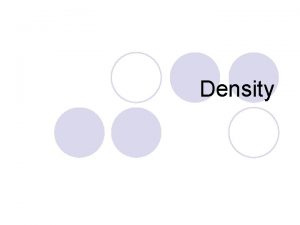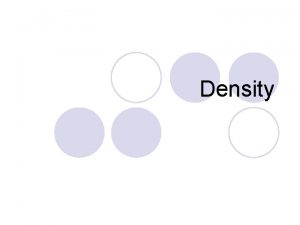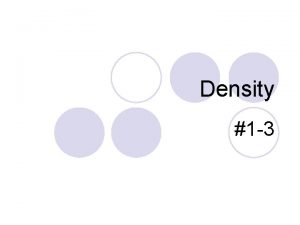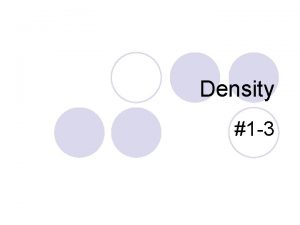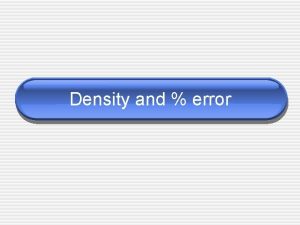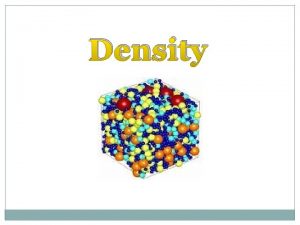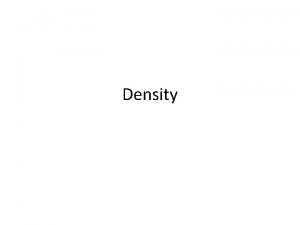Evolution of Restframe Luminosity Density to z2 in

















- Slides: 17

Evolution of Rest-frame Luminosity Density to z=2 in the GOODS-S Field Tomas Dahlen, Bahram Mobasher, Rachel Somerville, Lexi Moustakas Mark Dickinson, Harry Ferguson, Mauro Giavalisco and the GOODS Team GOODS-S multi-waveband observations Photometric redshifts Results on LFs and luminosity densities Summary ”Massive Galaxies”, STSc. I, 27 Sept 2004 Bahram Mobasher

Two sets of data covering GOODS-S WFI R-selected CTIO-U, WFI-BVRI, FORS-RI, ISAAC JHKs, SOFI JHKs psf: 0. 9 arcsec Area: 1100 sq. arcmin Redshift range: 0. 1<z<1. 0 RAB < 24. 5 Number of galaxies: 18300 Rest-frame U and B to z=1 ISAAC Ks-selected ACS BViz, ISAAC JHKs psf: 0. 45 arcsec Area: 130 sq arcmin Redshift range 0. 1<z<2. 0 Ks. AB<23. 2 Number of galaxies: 2768 Rest-frame J to z=1 and B to z=2 ”Massive Galaxies”, STSc. I, 27 Sept 2004 Bahram Mobasher ISAAC now twice as large

GOODS Phot-z Code / six templates used / Luminosity function used as prior / Cosmic opacity from Madau et al. / Extinction allowed as a free parameter, estimating E(B-V) for each galaxy / Interpolates the spectral types / Easily extended to other bands (ie IRAC, GALEX etc)




Luminosity functions are calculated using * 1/Vmax method * Maximum likelihood method Traditionally (ideally): each galaxy has one redshift -> one absolute magnitude -> one galaxy added to magnitude bin in LF Using phot-z's: Phot-z's have relatively large errors Each galaxy is represented by a redshift distribution

Photometric Redshifts Template fitting method Input LF prior Extinction correction Comparison with ~400 spec-z's: Accuracy: s(z)/(1+zspec) = 0. 12 Accuracy. s(z)/(1+zspec) = 0. 06, after excluding 3% out-liers ”Massive Galaxies”, STSc. I, 27 Sept 2004 Bahram Mobasher

Photometric Redshifts & the Luminosity Function We use the 1/Vmax-method to calculate the LF: F(M)d. M = S 1/Vi(Mi) Uncertainties in phot-z may introduce bias when determining the LF (Chen et al. 2003) Instead of a single redshift, we use a probability distribution for each object derived from phot-z method. The 1/Vmax-method is now expressed as: F(M)d. M = SPi/Vi(Mi) ”Massive Galaxies”, STSc. I, 27 Sept 2004 Bahram Mobasher

Results: The Luminosity Function, 0. 1<z<0. 5 Ho=70 km/s/Mpc, WM=0. 3, WL=0. 7 'Quasi-local' B-band LF for different types Late-types follow composite LF Early-types have Gaussian shape Starbursts are fainter ”Massive Galaxies”, STSc. I, 27 Sept 2004 Bahram Mobasher

Results: The Luminosity Function, 0. 1<z<0. 5 'Quasi-local' U-band LF for different types Similar to B-band but Starbursts more dominating ”Massive Galaxies”, STSc. I, 27 Sept 2004 Bahram Mobasher

Results: The Luminosity Function, 0. 1<z<0. 5 'Quasi-local' J-band LF for different types Steep faint-end slope (as optical) Starbursts less abundant Band M* a f* U -20. 1 -1. 33 0. 0026 B -21. 4 -1. 40 0. 0027 J -23. 6 -1. 48 0. 0008 ”Massive Galaxies”, STSc. I, 27 Sept 2004 Bahram Mobasher

Results: The Luminosity Function, 0. 1<z<1. 0 U-band B-band J-band ”Massive Galaxies”, STSc. I, 27 Sept 2004 Bahram Mobasher

Results: The Luminosity Function, 0. 1<z<1. 0 No strong evolution in faint-end slope in U, B or J Brightning of M* in U and B to z~1 (DM~0. 5 mag) Slight fading of M* in J to z~1 Faint-end slope a~-1. 3 - -1. 4, in all bands U&B slopes consistent with e. g. , COMBO-17, FORS Deep Field J-band consistent with local 2 MASS K-band slope a=-1. 09? Yes! ”Massive Galaxies”, STSc. I, 27 Sept 2004 Bahram Mobasher

Results: Luminosity density evolution The LF is integrated to derive luminosity density rn = G(2+a)f*L* (for Schecheter function approximation) Mean increase in all bands Largest evolution in U-band Relative contribution to rn from different spectral types: Significant increase of Starburst contribution with z Highest fraction Starburst in U-band Decrease of Early-type fraction with z Lowest Early-type fraction in U-band ”Massive Galaxies”, STSc. I, 27 Sept 2004 Bahram Mobasher

B-band luminosity density evolution to z=2 R- and K-selected measurements consistent where they overlap Increase by factor ~1. 7 in r. B to z=1 (compared to local value), Increase consistent with e. g. , COMBO-17 No significant evolution at z>0. 6 (in any survey) ”Massive Galaxies”, STSc. I, 27 Sept 2004 Bahram Mobasher

Conclusions Important to incorporate phot-z errors when deriving the LF No significant evolution in the shape (a) of the LF to z=1 in U, B, and J Brigthening of M* in optical bands (U, B) with redshift Indication of fading M* with redshift in J Faint-end slope a~-1. 3 - -1. 4 to z~1 Different shape of type-specific LFs (Early-types, Late-types and Starbursts) Increase in U-band luminosity density to z=1 (less significant in B and J) Sharp increase of the relative contribution from Starbursts in the luminosity density to z=1, especially in U, along with a decrease in the Early-type contribution The B-band luminosity density increases by a factor ~1. 7 to z~1. No significant evolution in the B-band luminosity density at z > 0. 6 ”Massive Galaxies”, STSc. I, 27 Sept 2004 Bahram Mobasher
 Physiological density of egypt
Physiological density of egypt High arithmetic density
High arithmetic density Linear atomic density
Linear atomic density What is the difference between density and relative density
What is the difference between density and relative density High density low density
High density low density Planer density
Planer density Luminosity distance
Luminosity distance Luminosity lpi
Luminosity lpi Redshift formula
Redshift formula Luminosity distance
Luminosity distance Astronomy
Astronomy Luminosity class definition
Luminosity class definition Luminosity vs temperature
Luminosity vs temperature Luminosity
Luminosity Magnitude and flux
Magnitude and flux Brightness vs luminosity
Brightness vs luminosity Luminosity
Luminosity Sun surface temperature
Sun surface temperature






